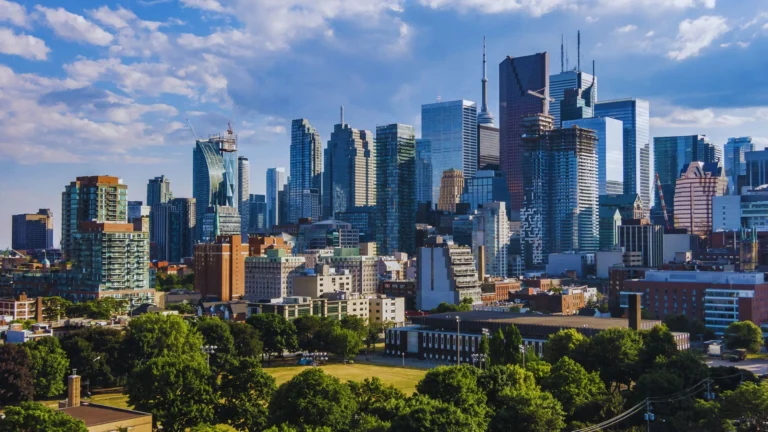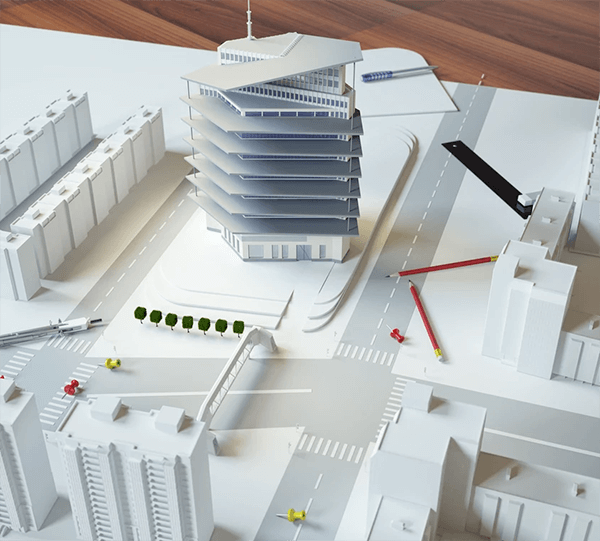Before the ‘For Sale’ signs hit the lawns, the city whispers its next chapter, if you know where to listen. In Toronto and the GTA, the most significant neighbourhood transformations often start quietly: a new café on a corner, a mural on an old brick wall, a community market appearing on a Sunday.
At Cityscape, we’ve learned that the most rewarding moves in real estate often happen quietly when you recognize a neighbourhood’s potential before everyone else does.
Why Anticipating Change Matters in Toronto Real Estate
Toronto’s real estate market is famously competitive and often reactive. By the time listings appear, many of the “good deals” have already been consumed. But those who can spot change early, investors, trendwatchers, or homebuyers with vision can position themselves ahead of the curve.
- Greater returns, lower risk. Buying before a neighbourhood gains mass appeal can lead to significant upside with less downside.
- Better selection. You get first pick of properties, more choices, and the opportunity to help shape the character of the area.
- Lifestyle alignment. You can move into somewhere that still has “soul” not just polished new builds.
But this only works if you learn to read signals, which are often small, local, and happen long before “For Sale” signs proliferate.
You might also be interested in: What to Know About the Fall Market Before Your Next Dinner Chat
7 Signals of Neighbourhood Transformation
Before a neighbourhood transforms, it leaves a trail of quiet clues hints that reveal where new life is beginning to take shape. Let’s walk through some of the key signals you should keep an eye on, along with the questions to ask yourself as you explore. These observations can help you move beyond numbers and listings, and start reading the city with a more intuitive, informed perspective.
-
Local Business Activation & Hospitality Energy
Look for new cafés, independent bakeries, craft breweries, coworking studios, art galleries, or popup shops. These often plant their stakes early because they see potential foot traffic before big chains follow.
- Are formerly empty storefronts being rejoined or turned into boutique uses?
- Do weekend markets, street fairs or food trucks show up?
- Has a formerly quiet corner gained benches, bike racks, or pedestrian traffic?
-
Public Art, Murals & Creative Installations
Murals, street art, and beautification projects often precede commercial interest. They signal “creative placemaking” someone sees the street as canvas rather than leftover.
- Are blank walls being repainted as murals?
- Are temporary art installations appearing?
- Has the BIA or city approved beautification in alleys, lighting, or decorative planters?
-
Infrastructure & Transit Signals
Investments in mobility bike lanes, road repairs, lighting upgrades, transit stops signal municipal confidence in an area’s future.
- Are new bike lanes or protected cycling paths being installed?
- Are bus or streetcar routes being extended or modified?
- Are sidewalks, lighting, and crosswalks being upgraded?
- Are property streets seeing better paving or street trees?
-
Zoning Changes & Building Permit Activity
One of the most concrete signals: applications for new developments, variances, or densification. These are often filed well before ground breaks.
- Scan your municipal planning portal for zoning amendments, site plan applications, or intensification proposals.
- Are building permits being submitted for infill or redevelopment?
- Do you see notices about public consultations or community meetings?
-
Demographic & Social Cues
Change in population, resident profile, and how locals use space matters.
- Are younger professionals, artists, or tech workers moving in?
- Are more people walking, cycling, or using public transit?
- Are locals posting “new in the hood” social media content, restaurants, or hidden gems?
- Is the mix of retail moving toward boutique and away from generic chains?
-
Transition Houses & Vacancies
Sometimes the “quiet before the storm” looks like wear, neglect, or patchy occupancy.
- Are storefronts or houses empty, yet still standing?
- Do you see maintenance deferred until a sale happens?
- Are houses or lots being held vacant or underutilized?
-
Triangulation & Timing Awareness
No single signal is definitive. It’s the overlap, new cafés near zoning proposals near transit upgrades that matters.
- Learn municipal planning cycles and timelines.
- Know permit backlogs and how long approval-to-construction takes.
- Understand that signals may precede market interest by 12–36 months or more.
You might also be interested in: Beyond “Just Do It”: Connecting with the New Generation of Buyers
4 Neighbourhoods to Keep an Eye On
Let’s place this theory into action, focusing on four Toronto and GTA neighbourhoods showing early-stage signs of transformation.
-
Downsview-Roding-CFB
Downsview-Roding-CFB is a stretch north of the city core, historically underutilized and industrial. It has long been eyed for redevelopment and growth. Toronto Life flagged Downsview in its “Where to Buy Next” deep dive.
Signals to Watch
- Major parcels of former industrial land or federal lands being re-zoned or sold
- Increased proposal activity for mixed-use or residential infill
- Improved transit linkages (especially GO or local connections)
- Local entrepreneurs opening cafés or creative studios
- New proposals in building permits or municipal planning portals
This area is one where the scale is large land parcels large enough to reshape blocks.
-
Woodbine-Lumsden
Situated in the eastern Danforth / East York corridor, Woodbine-Lumsden straddles long-established residential areas and commercial strips (Woodbine, Lumsden, Main Street). Its housing mix already includes a blend of older homes and infill.
Signals to Watch
- New café and boutique retail openings along Main, Lumsden, Woodbine
- Change-of-use applications in small retail blocks
- Infill proposals for laneway houses or small apartment buildings
- Emerging foot traffic and weekend pedestrian activity
- Local social media buzz about hotspots, hidden gems, new restaurants
Because this is a “mature fringe” neighborhood, signals will be smaller but frequent.
-
The Junction
The Junction is further along the transformation arc-once industrial and blue collar, now known for creative energy, independent shops, and a strong community identity. Its demand and prices are already elevated.
Signals to Watch
- Adaptive reuse of warehouses and factories (offices, lofts, galleries)
- Mid-rise densification proposals along arterial roads
- Boutique retail and experiential dining filling in gaps
- Streetscape improvements, public realm enhancements
- New office or creative-space proposals (e.g. timber offices)
-
Sterling Junction / Junction Triangle (Sterling Road)
Sterling Junction is in the heart of the Junction Triangle, anchored around Sterling Road. It is being actively reimagined as a mixed-use, master-planned community.
Signals to Watch
- Official plan and zoning changes: In April 2025, City Council adopted amendments to the Official Plan and Zoning By-law for lands at 158 Sterling Road and 190 Sterling Road.
- Sterling Junction master plan: over 600 residential units plus retail, parks, creative office.
- House of Assembly: a 17-storey mixed-use building by Marlin Spring planned on the east side.
- Public realm and parks: parks, green space, and creative offices are core to the vision.
These projects show both top-down and bottom-up momentum. It’s the kind of neighbourhood where many signals are stacking.
You might also be interested in: Finding Your Perfect Place: The 2025 Guide to Buying a Home in Ontario
How to Make These Signals Work for You
If you want to become a neighbourhood whisperer (and a more strategic buyer or investor), here’s how to build your edge:
Step 1: Choose “watchlist” neighbourhoods
Start with a few areas that aren’t mainstream yet (like Downsview, Woodbine-Lumsden, or Sterling Junction), plus a more advanced area (like The Junction). Focus your energy there.
Step 2: Walk the blocks with your radar
Bring your checklist (from the “Signals” section). Visit on weekday mornings, evenings, weekends. Take notes: storefront changes, new cafés, murals, building condition, foot traffic, vacant lots, new signage.
Step 3: Monitor planning & permits
- Use the City of Toronto’s planning portal, zoning amendment lists, and site plan applications
- Watch for building permits or notices posted on site
- Check public meeting notices, community associations, local BIAs
- Track timing: from proposal to permit to construction often takes a year or more
Step 4: Cross-validate with data
- Use demographic and census tools (StatsCan, Toronto neighbourhood profiles)
- Check building permit statistics (Toronto’s “Neighbourhood Intensification” report shows where housing intensification is happening)
- Use walkability / transit tools and Open Data
- Watch social media patterns and geotagged posts in those areas
Step 5: Engage locally
- Attend community associations, local BIA meetings, open house proposals
- Talk to business owners or café operators some of them may have noticed changes earlier
- Visit pop-ups, markets, arts events
Step 6: Be patient, act selectively
Signals can take 12–36 months to translate into listings and price movement. Don’t over-leverage prematurely. Instead:
- Get ready (“pre-approve, scout, have alerts”)
- Enter when multiple signals converge
- Use a Cityscape agent who knows your target area and can surface off-market opportunities
Be Aware! Not Every Signal Tells The Full Story.
Sometimes, what looks like the beginning of a boom is just a passing trend. A cozy café might open with great promise but quietly shut its doors a few months later, or a striking mural might appear on an old brick wall without being followed by any broader investment or development. These are false positives, and they remind us that not every sign of change leads to real momentum.
There’s also the danger of overhype and speculation. In Toronto’s fast-paced market, excitement can spread quickly, driving up prices in areas where the fundamentals of employment, infrastructure, or long-term demand haven’t yet caught up. This can lead to inflated expectations and uneven growth.
Another important factor to watch is gentrification backlash. While renewal can bring vibrancy, it can also trigger resistance from existing residents or even policy interventions that slow or halt projects altogether. Similarly, timing mismatches are common; some developments take years to move from proposal to construction, while others never materialize at all.
Finally, it’s crucial not to ignore the fundamentals. Even in the most promising up-and-coming neighbourhoods, things like school quality, transit access, local amenities, and safety remain the true pillars of value and livability.
In short, creative signals can reveal where a community’s energy is heading, but they should always be weighed against solid real estate fundamentals. The best insights come from balancing intuition with informed research and that’s where experience, like Cityscape’s, makes all the difference.
An Ally To Read The Signals
Reading the city before the signs go up isn’t about luck, it’s developing a perceptive eye and pairing it with market discipline. In Toronto and the GTA, countless neighbourhoods are waking up to new opportunities. Knowing how to spot the signals gives you a leg up.
At Cityscape, our deep portfolio of agents and local connections helps us see and source those early opportunities. If you’d like a guided neighbourhood scan, a walk-through with one of our agents, or to evaluate whether a given signal is credible, let’s talk.
Contact Cityscape to set up a pre-construction neighbourhood tour. Let us help you see what’s coming and position yourself early in Toronto’s next growth corridors.












